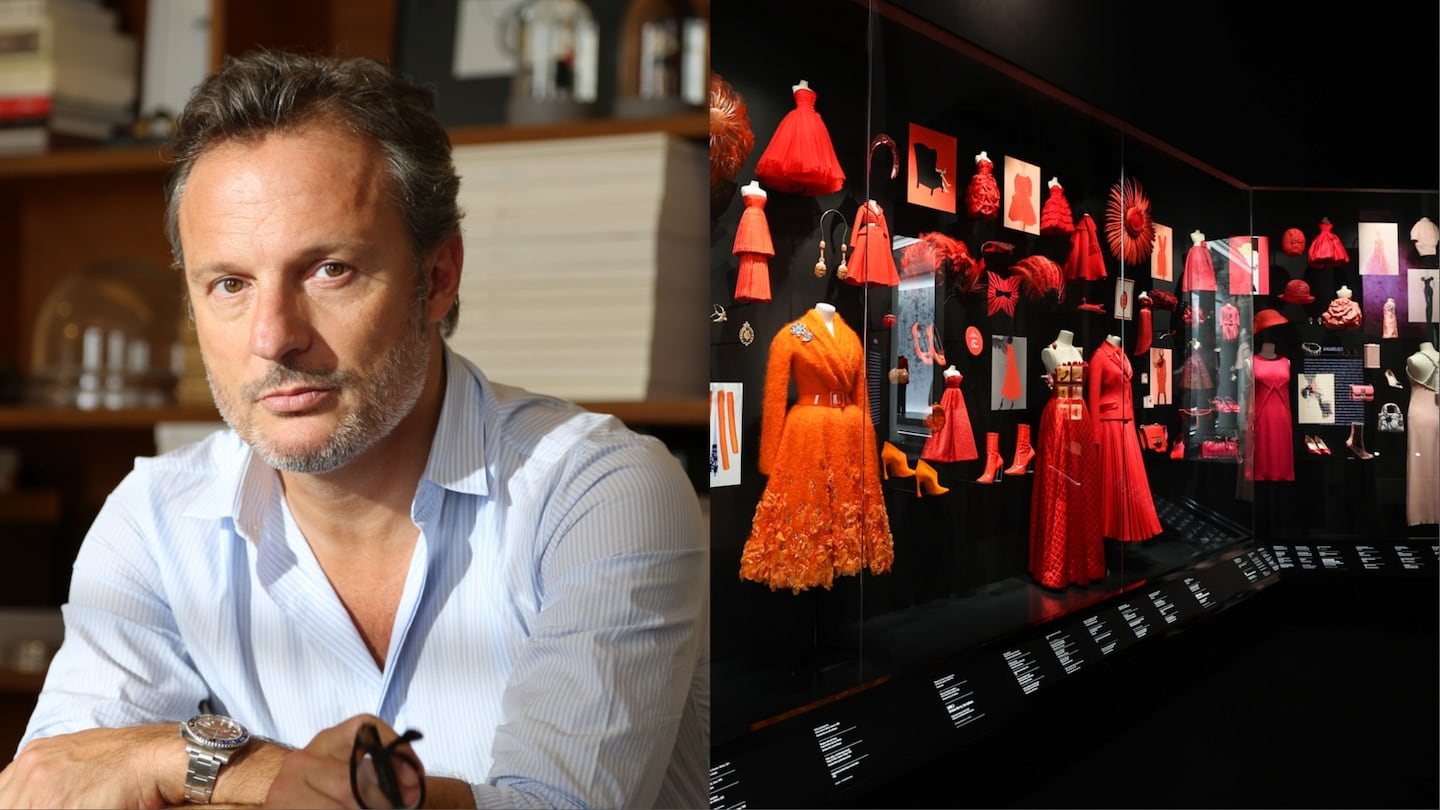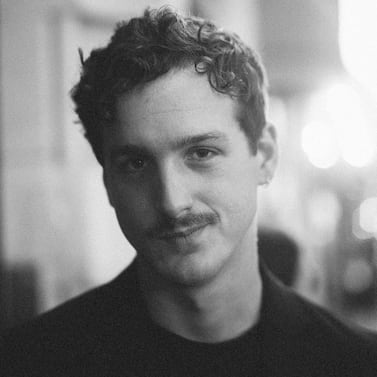
The Business of Fashion
Agenda-setting intelligence, analysis and advice for the global fashion community.

Agenda-setting intelligence, analysis and advice for the global fashion community.


During 18 years at Christian Dior, Olivier Bialobos has established himself as the French couture house’s 360-degree communications maven amid an ever-widening scope of projects to craft a varied, yet consistent message and glorify the Dior name.
Bialobos joined the company in 2006 during the heyday of former womenswear creative director John Galliano — then was charged with building a stable platform amid frequent creative turnover under Raf Simons and a studio-designed interregnum before the blockbuster tenure of Maria Grazia Chiuri since 2016. On the menswear side, his work intersected with creative director Kris Van Assche, and then Kim Jones, as well as Victoire and Cordelia de Castellane to design jewellery and homeware, respectively.
Still, Dior’s message of dreamy glamour and couture excellence came across more strongly than ever as owner LVMH continued to invest heavily in celebrating the prized asset, the first brand in chairman Bernard Arnault’s luxury empire.
In addition to multi-million-dollar runway spectacles throughout the year — from Paris Couture Week to far-flung travel shows to weekend-long experiences for high jewellery collectors — the brand has invested in establishing itself as a cultural institution through museum exhibitions as well as countless artist collaborations and celebrity partnerships.
ADVERTISEMENT
In 2021, Bialobos’ remit expanded to include oversight of Dior’s beauty division, the first time the units have shared a C-suite executive since Parfums Christian Dior and Christian Dior Couture in the 1960s. Then under new CEO Delphine Arnault in 2023, Bialobos was elevated to the role of deputy managing director in a consecration of his long-term contribution to and vision for the French house.
BoF: Dior revenue has been growing in recent years, and Citi estimates that it will rise to €10.2 billion ($11.4 billion) in 2024 from €8.7 billion ($9.3 billion) in 2022. How does this change the job of marketing a luxury brand?
Olivier Bialobos: It isn’t the scale that makes the job different so much as the period we’re living in. There’s so many communications tools that have appeared and you need to always be adapting to. Twenty years ago, there was no Instagram, no TikTok, not to mention all the more specific platforms in countries like China and Japan. Now we’re also seeing new opportunities related to TV thanks to streaming platforms like Netflix, Apple TV.
All of this means that, compared to the past, we have to produce much more content. Not so long ago, you were doing one ad campaign, maybe a little film every season. Marketing the fashion side was essentially just pictures. And we didn’t have so many collections to promote either.
BoF: When operating across so many channels, what steps can marketers and communicators take to avoid saturating the market, to avoid being overexposed? Can couture brands adopt the performance-driven approaches that are increasingly popular, or would that be antithetical to the idea of luxury?
OB: Desirability — not just visibility — has to be the target. That’s always been part of Dior from the beginning. There’s no recipe, but it all has to do with values somehow. Mr Dior had a vision with strong values: creativity, exceptional savoir-faire, inventiveness, audacity. Don’t forget that this was just after the [Second World War]. Those values remain very important to us today; then we could also add sustainability.
Performance marketing is about playing the game, it’s normal. But while you have to work on your current clients and make them dream, you also have to work on your potential clients, and make them dream. You promote the product properly and strongly, but then you also create emotions.
BoF: ‘Designer of Dreams’ [Dior’s retrospective museum exhibit that has been shown at the Musée des Arts Decoratifs (in Paris, Victoria & Albert in London and Long Museum in Shanghai] seems to mainly address the latter priority, which a lot of people would just call ‘brand marketing,’ although on quite a large scale. You also recently opened Dior’s own fashion museum — La Galerie Dior in Paris, the world’s largest museum devoted to a single designer. What is the strategy behind those museum projects?
ADVERTISEMENT
OB: We wanted ‘Designer of Dreams’ to be a mix of our heritage and also Dior today, presented in a modern way. It’s been a huge success — normally the MAD gets 400,000 visitors per year, during ‘Designer of Dreams’ it had 800,000 people in six months.
What’s very important is to make people dream, and with this show some people who don’t care about fashion, they escape and dream for hours. It’s about when you get out of the Galerie Dior or the V&A with stars in your eyes — and now Dior means something to you.
What’s also great is we have a huge range of products, starting with a fragrance or even a lipstick, up to an haute couture dress. So, if you love Dior you can buy into the brand at every level.
BoF: You’ve been responsible for the ‘One Dior’ image since 2021 — meaning you oversee image and communications for Dior’s cosmetics now too. What were the most important steps you’ve taken towards unifying the Dior message across fashion and beauty?
OB: You need a common thread — a fil rouge we would say in French — between fashion and beauty. That’s very interesting and pretty challenging because it’s two different timetables: You don’t often create a lipstick or a fragrance in less than two years, while we can create a [fashion] collection in four months.
But both can focus on the icons and the codes, to become one voice — which is stronger and louder. We’re unifying the messages and the energy.
BoF: More and more of Dior’s perfume ads have been re-shot with clothes, reflecting the current designers’ aesthetic on the couture side, or they’ve started to feature the updated logo and typefaces from 2017 more prominently.
OB: It’s not just the clothes, now. One of Maria Grazia Chiuri’s favourite photographers, Brigitte [Niedermair], recently shot the J’Adore campaign. We are using more and more of the same visual language overall.
ADVERTISEMENT
There are also some of the same ambassadors across beauty and fashion, like Jisoo [from South Korean band Blackpink].
BoF: Dior has navigated the transitions from John Galliano to Raf Simons to Maria Grazia Chiuri. What did you learn from managing that creative turnover?
OB: I was very fortunate to work with all those incredible designers, who each had a vision; each had a different way of working or of finding inspiration. John was taking research trips, making these research books that were sort of like his version of a mood board, then spending hours in these very closed-door fittings with just his immediate deputies. Raf was more focused on art and artists. With Maria Grazia, it’s more open, it’s about visiting ateliers, reading tonnes of books, trying to have a conversation — with artisans, with people. She isn’t trying to put the light on herself.
Ultimately our designers are constantly reinterpreting or sublimating our codes because it’s about storytelling, and creating dreams. All the designers are immersing themselves in the archives.
BoF: How can the codes and values of a brand like Dior change over time?
OB: For the codes, Dior has long been associated with its flagship bar jacket or cannage stitching. But other motifs can become codes over time, like how Maria Grazia revived the Toile de Jouy and made it a stamp of the brand. In terms of values, the notion of femininity has evolved over the years and under every designer. Maria Grazia brought something about not just femininity but feminism that was really a very strong statement.
She was convinced it was the right thing and she had a vision. She didn’t want to fight — there’s something negative about that — but rather she wanted to promote something. In 2017, she’s been very criticised in fashion because of a T-shirt [reading “We Should All Be Feminists”]. Today I receive calls from museums all over the world to have this outfit.
BoF: Are there any other lessons you’d like to share about marketing a luxury brand?
OB: Mr Dior used to say, ‘Tradition needs to be disrupted so that it always remains modern and desirable.’ That’s a quote I use almost every day.
This interview has been edited and condensed.
This article first appeared in The State of Fashion 2024, an in-depth report on the global fashion industry, co-published by BoF and McKinsey & Company.
LVMH is part of a group of investors who, together, hold a minority interest in The Business of Fashion. All investors have signed shareholders’ documentation guaranteeing BoF’s complete editorial independence.
The eighth annual State of Fashion report by The Business of Fashion and McKinsey & Company reveals an industry navigating deep uncertainty. Download the full report to understand the 10 themes that will define the industry and the opportunities for growth in the year ahead.

Robert Williams is Luxury Editor at the Business of Fashion. He is based in Paris and drives BoF’s coverage of the dynamic luxury fashion sector.
The designer has always been an arch perfectionist, a quality that has been central to his success but which clashes with the demands on creative directors today, writes Imran Amed.
This week, Prada and Miu Miu reported strong sales as LVMH slowed and Kering retreated sharply. In fashion’s so-called “quiet luxury” moment, consumers may care less about whether products have logos and more about what those logos stand for.
The luxury goods maker is seeking pricing harmonisation across the globe, and adjusts prices in different markets to ensure that the company is”fair to all [its] clients everywhere,” CEO Leena Nair said.
Hermes saw Chinese buyers snap up its luxury products as the Kelly bag maker showed its resilience amid a broader slowdown in demand for the sector.